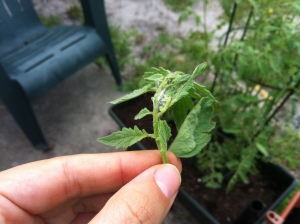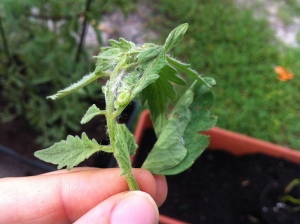Last week I posted a link to a survey. It was a survey I created based on a class I am taking on Sustainability and Conscious Living which is the first course in my Urban Farming Educator certification. It wasn’t required for the class but I felt the information that I had gotten through research on the “current social ecological meaning of the term ‘green'” warranted a little social media surveying.
How “green” are you?
I’ll leave the link open for a time to continue to collect data if you’d like to submit your answers. Right now, as if this post, I have 68 anonymous respondents. I feel confident publishing the statistics because when I posted my results to the class I had only 24 and even tripling the number of participants, the percentages stayed relatively the same.
The research I collected from Buildipedia and Environmental Leader both stated that what “green” boiled down to was MONEY. Builders, car makers, electronic producers, really everyone in businesses and corporations has decided that using the term “green” will help their bottom lines. Perceived and real cost savings outweigh our need to do what is right. I felt there was truth in that, I know that many people say they are “green” but their actions belie that statement. Or they want to be green but there isn’t products or services that measure up to conventional. I was curious how accurate these reports were in the general population.
Here are the results and below my conclusions.
Question 1. On a scale of 1 to 10 how important is it for you to be “green” versus saving money in your purchases? (10 being extremely important and 1 being not important at all) Here I allowed the respondent to manually type in their response, I felt that it would take more thought to write a number than to choose from a list. I used to fill in those bubble surveys to make patterns, too.
RESULTS
1= 1
2= 0
3= 5
4= 2
5= 13
6= 6
7= 18
8= 13
9= 2
10= 7
With one person not giving a clear numbered answer.
My Findings – Right off the bat, I see that the majority of persons have the consciousness of being “green” and consuming products that correspond to that way of life that corresponds to half or more of the importance of the purchase they are making.
That’s huge! That right there should signal that we are at a socially responsible point in our society where even considering a “green” purchase. Which does correlate to other data, that “green” items are in higher demand and people are willing to pay for them. But let’s check out the rest of the survey.
Question 2. If presented with 2 products both from the same manufacturer and costing the same but one says “green” and the other does not, how likely are you to purchase the “green” product?
|
Response
Percent |
Response
Count |
| Very Likely |
|
85.3% |
58 |
| Neither Likely not unlikely |
|
13.2% |
9 |
| Unlikely |
|
1.5% |
1 |
My Findings – Again, we’re doing great, a huge number of you will choose a self-proclaimed “green” product over a conventional one. That’s good, and again it goes with reported trends of “green” products being in higher demand, but let’s go further.
Question 3. You go to the store to purchase a specific product yet while you are shopping see a similar product labeled “green” for a small amount more, would you purchase the “green” product over the one you initially intended to buy?
Response
Percent |
ResponseCount |
| Yes |
|
64.7% |
44 |
| No |
|
4.4% |
3 |
| unsure |
|
30.9% |
21 |
I don’t know why that charts are messed up and I can’t fix it! apologies!
My Findings –Here is where I start to see a dip in the trend. I worded these questions deliberately similar. From Question 1 we know that being “green” rates pretty high over saving money according to respondents, and from Question 2 we see that they would purchase a “green” product over an identical conventional one of the same price. But once the price changes, and the “green” product costs more, I start to see a less enthusiastic commitment to “green”.
Question 4. Which is more important to you, saving money initially on a purchase or spending more now with the promise of savings over time? Why? Again, I allowed respondents to write out their answers, I will include a few of the responses here.
Results –
Saving more money now – nearly 30%
Saving more money down the road – nearly 50%
Unsure/unclear – 30%
A few random responses-
-“There is more to it for me than just saving money. The product must have minimal natural ingredients and work effectively. Some I will pay more for just to support it.”
-“Savings over time but we can’t always afford to go that route if the price now is substantially more than the other product.”
-“I like to say over time, but if its more than double the price i will have to go saving money initially.”
My Findings – I could have made this question a bit clearer. I had in mind a larger purchase such as a car or home or large appliance purchase, something where you are promised savings over time like lower gas or utility charges. BUT even these results show that people are willing to spend more money, at least that’s what they say, according to Question 3, that isn’t always the case and from the last question’s results I question the truth to Question 4’s responses. Not to say they’re lying but maybe they’re just not telling themselves the whole truth.
Question 5. Would you be satisfied with a consumable product that was labeled “green” if it did not work as well as a conventional product? (such as dish soap, paper products, etc.)
Results-
| yes because being “green” is more important |
|
13.2% |
9 |
| yes because of another reason |
|
4.4% |
3 |
| no because I feel it’s a waste |
|
44.1% |
30 |
| no because it doesn’t really matter as long as I get the best results |
|
2.9% |
2 |
| no because of other reasons |
|
10.3% |
7 |
| maybe |
|
25.0% |
17 |
My Findings – This was the clincher for me in the survey. It really showed that saving money was more important than being “green”.
When we have gotten used to things like optical-brighteners, oil strippers, toxic human waste absorbers, parabens, etc. the transition to natural products can make us feel that they are letting us down. 100% recycled toilet paper isn’t as soft as the kind injected with deodorants ad chemical softeners. Natural detergents are gentler than their conventional counterparts and it might take a little extra scrubbing or soaking to get things as clean as you would otherwise. Rechargeable batteries might need to be changed more frequently.
But if we’re to really, truly, embrace being “green” we have to take the good with the bad. We have to expect some level of change in our thinking from easy, fast, quick because the”green” alternatives are just as good or better than the conventional ones, they’re also different. And different can be good we just have to shift our thinking that the green in our wallets isn’t more important than the green of the world.
I think that overall, we want to be “green” we want to be ecologically minded in our purchases but when it comes down to parting with our hard earned cash to do so, we get a little wavy in our commitment. Not saying this is true for everyone but the larger picture of the market trend reports in addition to my survey results show that it seems to be the case.
What do you think about my research and conclusions?






